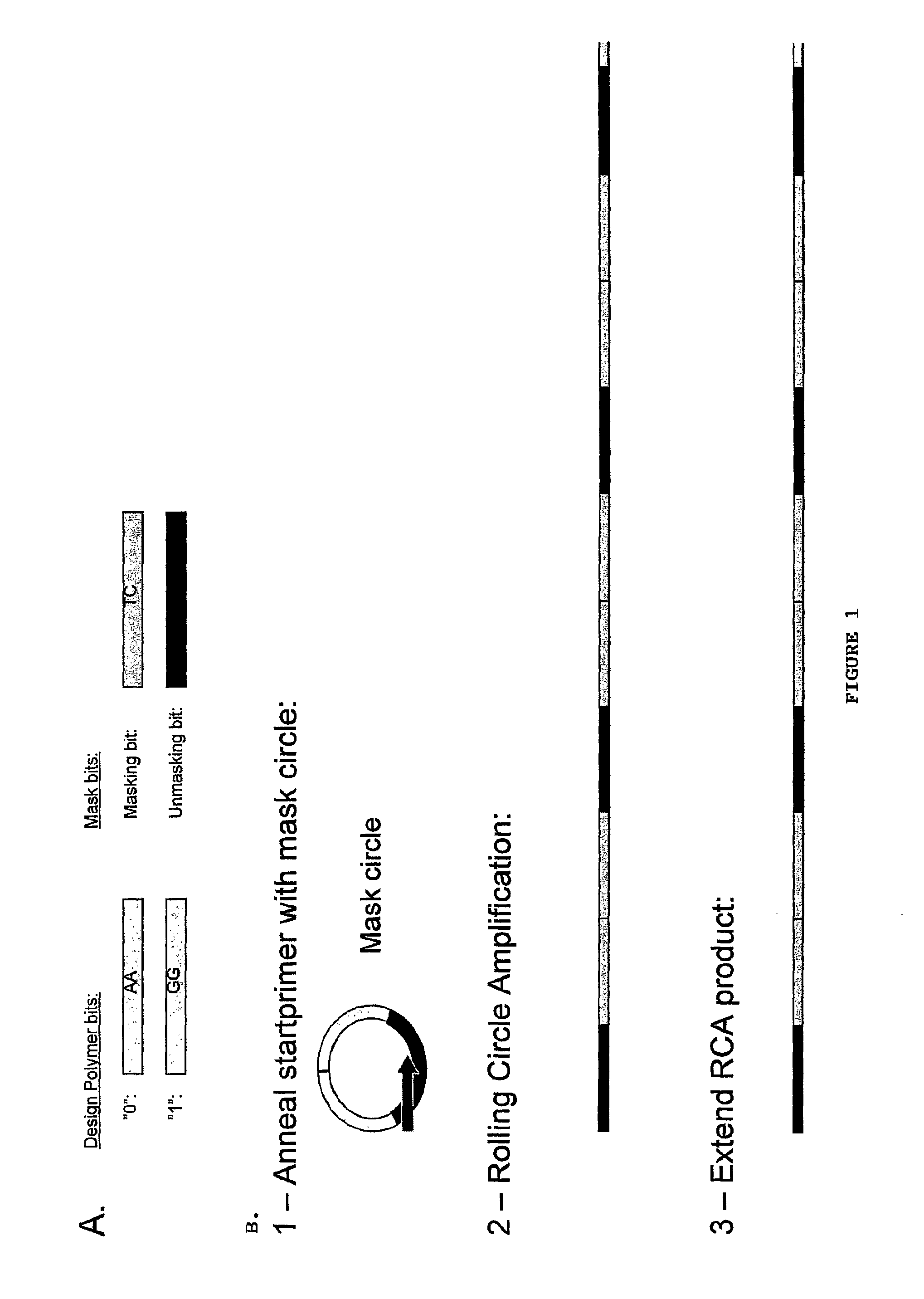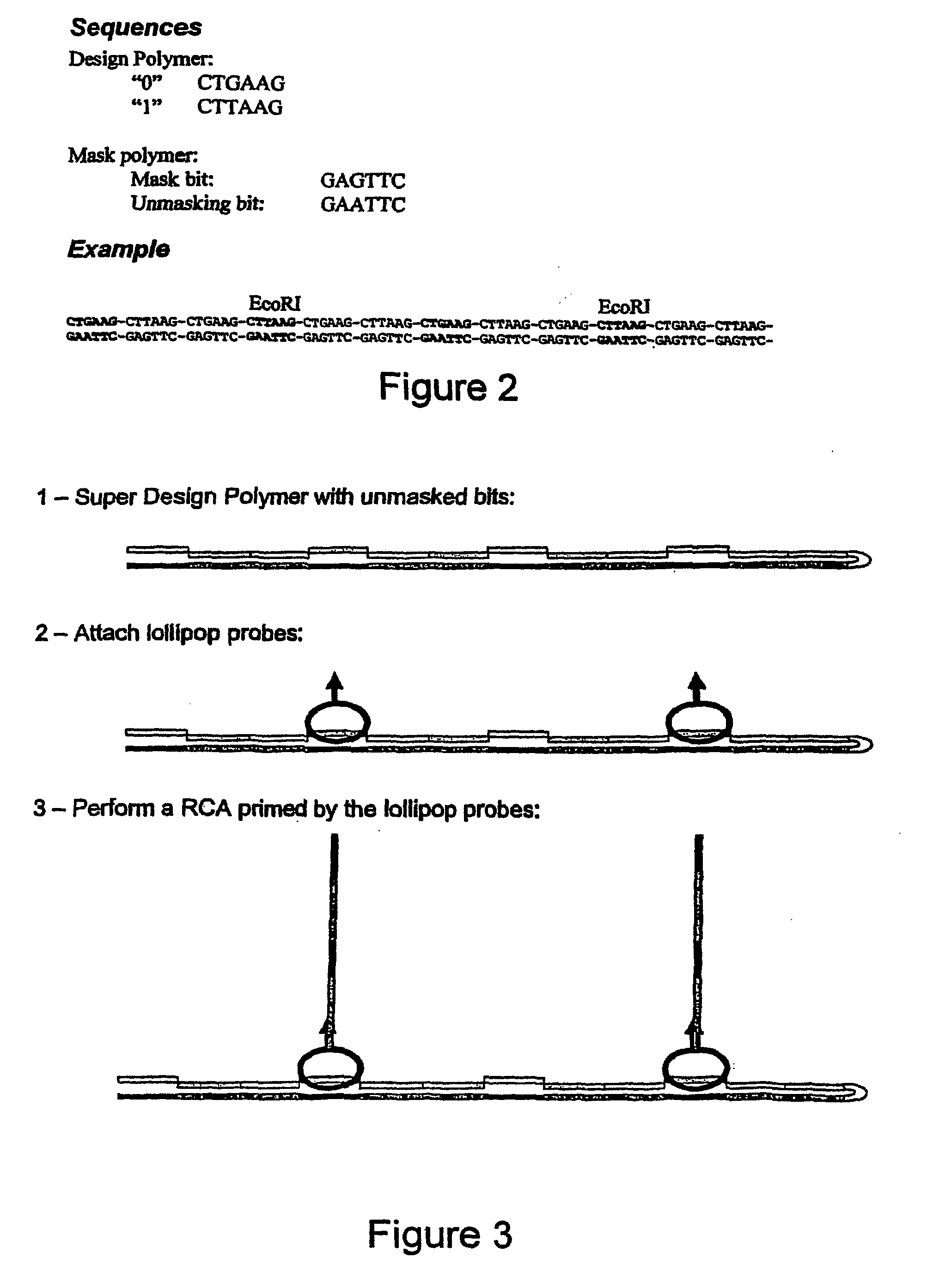Method for Preparing Polynucleotides for Analysis
- Summary
- Abstract
- Description
- Claims
- Application Information
AI Technical Summary
Benefits of technology
Problems solved by technology
Method used
Image
Examples
example
[0078]In order to demonstrate the “roll-back” principle a 114 nt single-stranded molecule was used as a second polynucleotide substrate and a 38 bp circular target molecule. The substrate molecule was immobilized on 1 μM streptavidin coated paramagnetic beads using biotin to “anchor” the second polynucleotide.
[0079]The target molecule is hybridised to the second polynucleotide and phi29 DNA polymerase is added. The polymerase performs an extension using the target as a template. The extended strand is complementary to the second polynucleotide, and will, according to the roll-back theory, hybridise to the second polynucleotide forming an 114 bp double-stranded molecule. Depending on the sequence of the target, the double stranded molecule will contain recognition sites for certain restriction endonucleases (FIGS. 10, 11 and 12):
[0080]As shown in FIG. 10, the target with the unit sequence 0100 creates a recognition site for BamH1 in the 2nd bit position in the 2nd target polynucleoti...
PUM
 Login to view more
Login to view more Abstract
Description
Claims
Application Information
 Login to view more
Login to view more - R&D Engineer
- R&D Manager
- IP Professional
- Industry Leading Data Capabilities
- Powerful AI technology
- Patent DNA Extraction
Browse by: Latest US Patents, China's latest patents, Technical Efficacy Thesaurus, Application Domain, Technology Topic.
© 2024 PatSnap. All rights reserved.Legal|Privacy policy|Modern Slavery Act Transparency Statement|Sitemap



